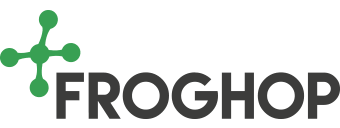Selling direct to customers (D2C) is a viable option for many food businesses. It’s grown considerably in the last couple of years. But how do you ensure your product maintains its quality and is safe to eat when you send it via couriers and delivery services? Read on to find out about food safety for direct-to-consumer sellers.
The Covid-19 pandemic has dramatically accelerated the shift to online. With many restaurants and retailers forced to shut their doors during lockdown, e-commerce sales saw a huge spike. Food and drink brands such as Beyond Meat took the opportunity to develop their own direct-to-consumer sales channels, to reach more customers. Meal box subscription deliveries such as Hello Fresh and Gousto have also accelerated their growth. Today, these trends are here to stay, and research suggests that D2C sales will grow by 27.5% for food and drinks between 2020 and 2023 .
For food manufacturers, the rising demand for online shopping presents an exciting new avenue to tap into. However, consumers expect a quality product, and there are important rules to follow. If you’re considering implementing a D2C channel, how do you ensure your products are delivered on time to consumers, in one piece – and, importantly, how do you do that safely?
What responsibilities do businesses have?
If you run a food business, you must ensure that the products you sell for consumption are safe to eat and not harmful to health. It’s vital to ensure good hygiene from start to finish – food must be appropriately stored to prevent contamination. When transporting food, it’s also essential to ensure it’s transported in packaging or containers that keep it safe.
In addition, all prepacked food requires clear and easy-to-read labelling. You must show certain mandatory information, including the ingredients and any allergens.
What systems do you need to have in place?
All food businesses are subject to many legal requirements designed to protect the health of consumers. This includes:
- Registering your business – When you start a new food business, you must register with your local authority at least 28 days before you start trading, regardless of where you operate in the UK, whether from a van or online.
- Food safety – You are legally required to have an approved food safety management system based on Hazard Analysis and Critical Control Point (HACCP) principles. HACCP is a system that helps you identify potential food hazards and implement procedures to eliminate or reduce those hazards, ensuring food is safe for customers. You must have a ‘HACCP aware’ person.
- Traceability – You must abide by traceability rules to help keep track of your products throughout the supply chain. This ensures that unsafe foods can be recalled or withdrawn from the market in the event of any food safety problems.
- Labelling – Lastly, your labelling, advertising and presentation of food must be appropriate.
What do the regulations say?
Food businesses must ensure they place safe food on the market. This applies to all stages of production, processing and distribution. You’re responsible for food safety over the shelf life – including transit to the customer.
Interestingly, the regulations themselves don’t specify the methods for doing this in any great detail. It’s up to you as a food business operator to manage this. You need to be able to demonstrate that you’ve done sufficient work to ensure your product is safe and compliant.
Part of this is identifying who your suppliers are and having full traceability. This means keeping records that follow the product (and all of the ingredients within it) throughout the supply chain – not just where it’s come from or been, but also where it ended up after it left each stage of production. It will help you promptly withdraw or recall unsafe food.
Under the Food Information Regulations (2014), food businesses are also responsible for ensuring all products are labelled correctly and in a way that doesn’t mislead consumers.
Key rules for selling online
Food businesses that sell online must abide by the same strict health and safety standards. You have to make sure all products are delivered to consumers in a way that ensures that they do not become unsafe or unfit to eat. This means:
- Making the same level of information available online as on the food labelling to the consumer – before the purchase. Food labelling has to include an accurate description of the product, a list of ingredients in order of weight, any allergens, and its durability (e.g. sell-by date).
- Ensuring that the food business’s legal name and address are provided on the website (e.g. on a ‘Contact Us’ page)
- Paying consideration to temperature control during delivery. Products that need refrigerating must be kept cool during transit (e.g. packed in an insulated box with a coolant gel or in a cool bag).
